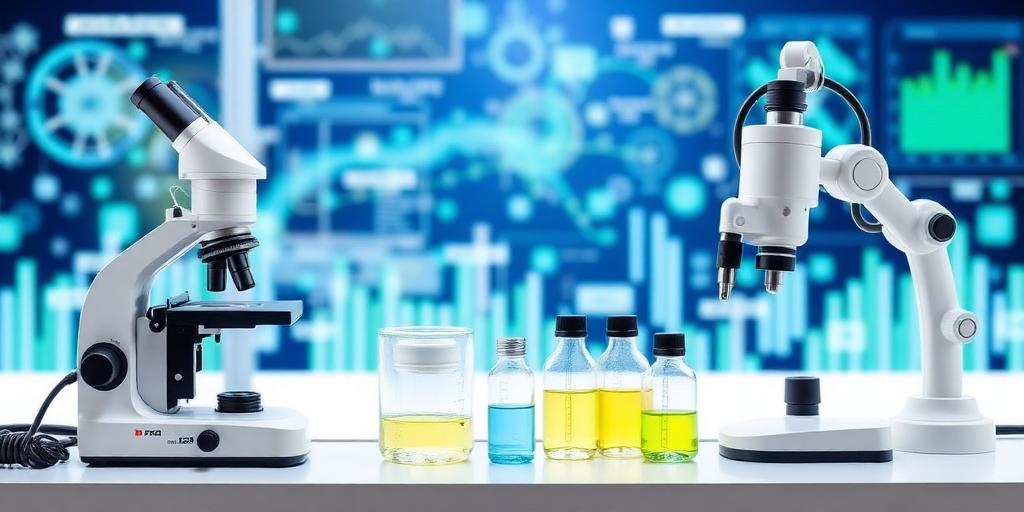Innovations in Scientific Instrumentation
Scientific instrumentation is the backbone of modern research and development. These sophisticated tools enable scientists to observe, measure, and manipulate the natural world with unprecedented precision and accuracy. From nanoscale imaging to high-throughput analysis, recent advancements are revolutionizing various fields. This post explores some of the most exciting innovations in scientific instrumentation.
Microscopy and Imaging Technologies
Microscopy has undergone a dramatic transformation in recent years. Traditional optical microscopes have given way to advanced techniques that offer higher resolution and deeper insights into cellular and molecular structures. Some notable advancements include:
- Super-Resolution Microscopy: Breaking the diffraction limit of light, techniques like stimulated emission depletion (STED) microscopy and structured illumination microscopy (SIM) allow scientists to visualize structures at the nanometer scale.
- Cryo-Electron Microscopy (Cryo-EM): This technique involves freezing biological samples at cryogenic temperatures and imaging them with an electron microscope. Cryo-EM has become indispensable for determining the structures of proteins and other biomolecules.
- Light-Sheet Microscopy: Also known as selective plane illumination microscopy (SPIM), this technique illuminates only a thin section of the sample, reducing phototoxicity and enabling long-term live-cell imaging.
Spectroscopy and Spectral Analysis
Spectroscopic techniques analyze the interaction of matter with electromagnetic radiation. Innovations in this area are enhancing our ability to identify and quantify substances with unparalleled sensitivity. Key advancements include:
- Mass Spectrometry Imaging (MSI): This technique combines mass spectrometry with imaging to map the spatial distribution of molecules within a sample. MSI is used in drug discovery, diagnostics, and materials science.
- Raman Spectroscopy: Enhancements in Raman spectroscopy, such as surface-enhanced Raman scattering (SERS), are enabling the detection of trace amounts of substances, with applications in environmental monitoring and forensics.
- Hyperspectral Imaging: This technique captures hundreds of narrow, contiguous spectral bands, providing detailed spectral information for each pixel in an image. Hyperspectral imaging is used in remote sensing, agriculture, and medical diagnostics.
Automation and High-Throughput Systems
Automation is accelerating scientific discovery by enabling researchers to perform experiments on a large scale. High-throughput systems are particularly valuable in genomics, proteomics, and drug screening. Innovations include:
- Robotic Liquid Handling: Automated liquid handling systems can accurately dispense and mix liquids, reducing manual errors and increasing throughput.
- Microfluidics: These devices manipulate tiny volumes of fluids in miniaturized channels, enabling precise control over chemical reactions and biological assays.
- High-Content Screening (HCS): HCS systems combine automated microscopy with image analysis to screen large libraries of compounds for biological activity.
Sensors and Measurement Technologies
Advanced sensors are enabling scientists to measure physical and chemical parameters with greater accuracy and precision. Some notable innovations include:
- Biosensors: These devices combine a biological recognition element with a transducer to detect specific biomolecules. Biosensors are used in medical diagnostics, environmental monitoring, and food safety.
- Nanomaterial-Based Sensors: Nanomaterials, such as carbon nanotubes and graphene, offer unique properties that can be exploited to create highly sensitive sensors.
- Quantum Sensors: These sensors use quantum mechanical effects to measure physical quantities with unprecedented precision. Quantum sensors have potential applications in medical imaging, navigation, and fundamental physics research.
Data Analysis and Informatics
The vast amounts of data generated by modern scientific instruments require sophisticated data analysis tools. Innovations in informatics are helping researchers extract meaningful insights from complex datasets.
- Machine Learning (ML): ML algorithms can identify patterns and make predictions based on large datasets. ML is used in image analysis, drug discovery, and personalized medicine.
- Big Data Analytics: Techniques for analyzing large, complex datasets are essential for extracting insights from genomics, proteomics, and other high-throughput experiments.
- Cloud Computing: Cloud-based platforms provide researchers with access to powerful computing resources and data storage, enabling collaborative research and data sharing.
Conclusion
Innovations in scientific instrumentation are driving progress across various fields, from biology and medicine to materials science and environmental science. These advanced tools are enabling scientists to explore the natural world with unprecedented detail, leading to new discoveries and technological breakthroughs. As technology continues to evolve, we can expect even more exciting advancements in scientific instrumentation in the years to come.









